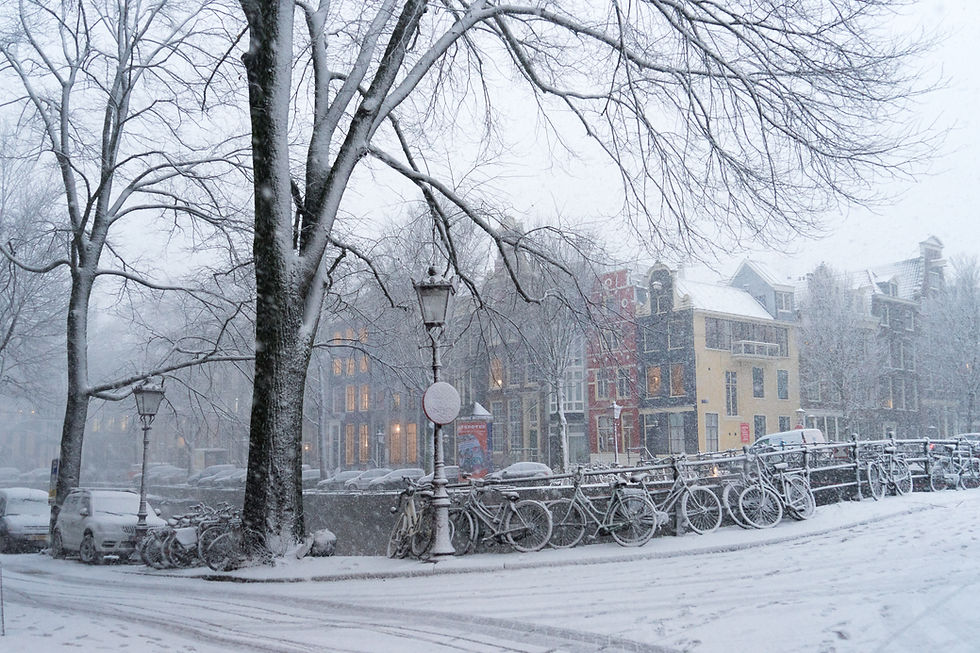In Praise of Snow - winter is my favorite season

Winter is my favorite season. And where I live, winter brings cold and snow. Do you like snow? I do. I like to play in the snow.


What fun to sled in the snow (screaming), to ski across the snow (silently), to ride a snowboard in the snow (grinning), to ice skate (laughing), to make snow angels (shivering), to bring a snow person to life (cooperating), to have a snowball fight (competing), to make snow caves (digging), and snow forts (lying in wait).
I never fail to thrill at the sight of moonstruck rainbows glittering off the surfaces of fine snow on a sub-zero night. I love standing out in the snow when it is softly falling, watching the flakes shining in my hair, and catching them on my tongue. I cherish the mornings when I awake to white skies filled with snow, snow, snow. There's snow on the ground, snow tumbling down, nothing but snow. Even life is canceled for the day. Snow day. It's no day. No responsibility day. Hooray. Snow!
Snow is beautiful. Each snowflake unique. Each a miniature mandala. Each one a slice of a six-sided crystal. And every snowflake, like a quartz crystal, is vibrant and vibrating. Snow is magic. Everyone feels it. Experiment this winter with using the crystalline energy of snow.
When snow falls without wind, it outlines each branch and bud of each tree and shrub. Perhaps it is making their auras visible. Snow rounds and softens the shapes of nature. Snow connects everything with sweeping strokes. Snow blots out the details and leaves the big picture. Snow speaks to our pleasure, and our need, to erase the small stuff, to soar wide in imagination, to understand the big pattern.
Snow lays quietly, covering the ground, covering the plants. Snow provides an insulating blanket that protects the roots of the plants. Without snow cover, the ground heaves. It freezes at night, and expands up. Then it thaws during the day, and sinks down. This seesaw of freezing and thawing, expanding and sinking, pushes up large rocks from beneath the ground and can uproot plants. A blanket of snow keeps the ground evenly frozen, preventing frost heaves and protecting the plants from upheaval.
That blanket of snow provides safe cover for small animals, too. They can burrow beneath it, running and foraging safe from the watchful eyes of predators. Snow keeps little animals warm, too.
I admire snow's beauty. I'm thankful that snow protects the animals and the plants. But what impresses me the most about snow is its country name: "poor person's fertilizer."
Yes. It is snow's power to bring fertility to the land that amazes me the most. Snow is water. But snow is so much more than water. Each snowflake forms around a mote of dust. That dust is an iota of soil, a minute amount of minerals. And as the snow falls to the ground, it brings with it the nourishment of that tiny bit of mineral dust.
This is true of raindrops as well. Each drop of rain coalesces around a mote of dust. I frequently hear people refer to the rain as "cleansing." Fortunately for us all, it is not. Just think what a barren wasteland we would inhabit if, instead of nourishing the soil, rain cleansed it. When rain washes the dirt away, we call it erosion. And, without dirt, there can be no plants. Rain is not cleansing. Rain is nourishing. And so is snow.
The minerals in snow are absorbed into the soil. And, when the ground thaws, they are taken up by the plants. The weeds make exceptionally good use of the mineral wealth of snow. Oats and oatstraw consolidate the snow's magnesium, with 1200 mg in 100 grams of herb. Red raspberry grabs onto the manganese, manifesting 146 mg in 100 grams of herb. Chickweed loves snow's iron, offering 253 mg in 100 grams of herb. Valerian values snow's calcium; Skullcap thrives on snow's copper; hibiscus sops up snow's chromium; catnip goes for snow's selenium; while nettle champions snow's zinc.
Minerals provide structure and allow communication in cells, plants and animals. The healthiest soils are mineral-rich soils, which grow mineral-rich plants, that nourish healthy mineral-rich bodies. Minerals — because they are vital to immunity, hormonal activity, and energy production — are the key to optimum health, for people, plants, and the planet.
Weeds are green snow. Minerals fall as snow, are taken up by the weeds, and become available to us in forms we can use as food and medicine. That's why I champion them: my dear friends, the medicine outside your door, mineral salts in many forms: nettle, oatstraw, dandelion, burdock, lamb's quarters, mallows, and purslane, to name a few.
When in Switzerland some years back, I visited a cheese factory and watched a movie about Swiss cheeses. "What makes Swiss cheeses so special?" the movie asked. Then, answering its own question, it replied: "The special plants our cows eat." And there they were, right up on the big screen, the stars of the show: red clover and dandelion, yellow dock and chickweed, sorrel and plantain, burdock and mustard, nettle and thistle. Their cows eat mineral-rich weeds, fed by the snow.
Go out into the snow if you can this winter. Taste it. Savor it. Play with it. Admire it. Open your heart to its blessings. Open your spirit to its richness. Open yourself to its nourishment.
You are a beloved child of the Universe and the snow is stardust.
Green blessings.
********************
This article was written when long cold winters were the norm. Nowadays it is too warm at night to collect sap in March and most sugaring is done in February. ~ Susun